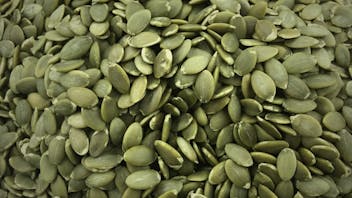Product Overview
Our Holy Basil (Tulsi) essential oil has a sweet, pungent, clove-like, somewhat bitter green/herbaceous aroma, with a soft balsamic-woody undertone; it also has a remarkably persistent sweetness. Eugenol is the predominant chemical constituent in this species of Basil, which accounts for its clove-like scent, along with methyl chavicol (aka estragole), also present but in a much smaller percentage. [1],[2] Holy Basil's eugenol content is brightened and supported by a lively bouquet of energetic monoterpenes and a fair amount of the oxide, 1,8-cineole.
Ocimum sanctum, a species native to India, is worshipped as the plant of Lakshmi, consort of Vishnu, and thus considered a sacred plant. It is grown near temples and in home courtyards to invite the presence of the gods and freshen the air.[6] Among its worthy attributes, it is said that Basil opens the heart and brings harmony to the mind and spirit. [7] Not the easiest oil to source, this is the well-rounded and tenderly produced Holy Basil we have been waiting for.
Tulsi is well suited in elevating diffuser blends and room sprays, and in low dilutions in meditation and massage blends, steams and chest rubs.
1 Industry communication.
2 Rhind, Jennifer Peace. Listening to Scent - An Olfactory Journey with Aromatic Plants and Their Extracts, 2014, p. 71.
6 Rhind, Jennifer Peace. Essential Oils - A Handbook for Aromatherapy Practice, 2nd ed., 2012, p. 170.
7 Miller, Light and Bryan. Ayurveda & Aromatherapy, 1995, p. 222.



